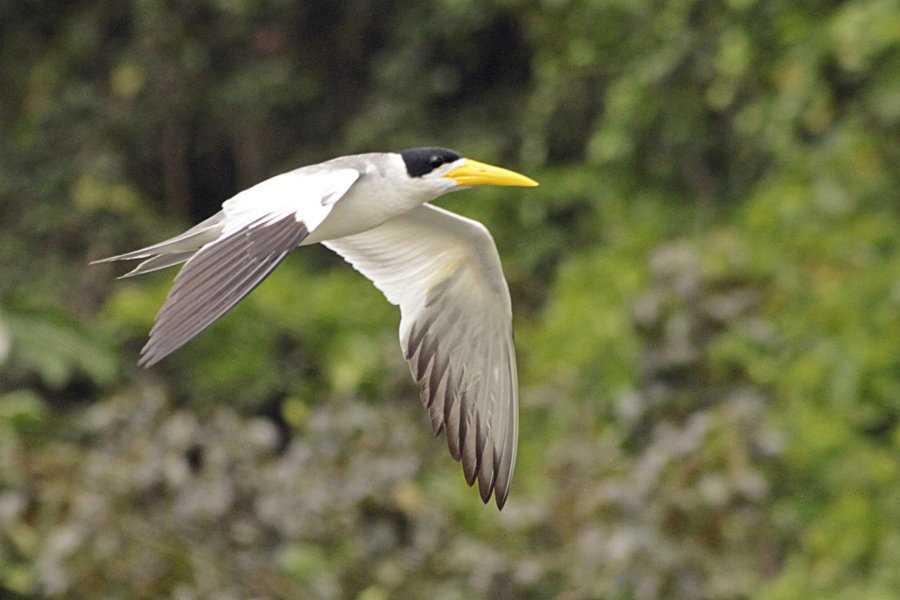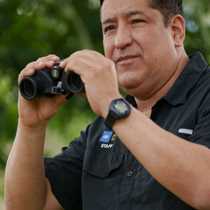We spent a full day exploring two remote locations of the reserve, Yanalpa Caño in the morning and “El Dorado River” in the afternoon.
We disembarked in direction to Belluda Cañoat 0630. Our goal was to explore the nearby shores of the Ucayali River where our ship was located. In a large section of this area in the vicinities of Belluda Caño there are many dead palm trees in a swampy area. These hollow palm trees are nesting and roosting places for Macaws. We were lucky for we observed several chestnut-fronted macaws and the spectacular blue and yellow macaws coming out from the dead trees they inhabit. Several other bird species were seen as well most of them perching on high branches of trees along the river banks as well.
After the successful early ride we went for a walk on a seasonal flooded area. This kind of terrain is known in Ecology as Varzea forest and is eminently interesting for vegetation found in this kind forest is completely different from the one found on terra firme forest that never get flooded.
In the way back to the ship after a late breakfast I had the pleasure to give a talk on one of my favorite subjects, the Morphology, Ecology and Behavior Notes of the Primates found in the Pacaya Samiria Reserve.
Before lunch naturalist Reny Coquinche had a fruit exhibition prepared for us. Our guest avidly tasted, tried, smelled and learnt about the many fruits found in this area of the world.
In the early afternoon, we had an amusing activity. We went to a seasonal beach on the Ucayali River. Our guests swam and get covered with the rich-in-minerals mud found in the river banks. On the late afternoon we had plenty of time to go far and beyond El Dorado River. We experienced firsthand the extraordinary biodiversity that inhabit the rainforests. Our skilled naturalists handled to spot several bird species like horned screamers, wattled jacanas, yellow-billed terns, some birds of prey, several three-toed sloths and some few monk saki monkeys. As the day was getting dark we experienced from the comfort of the skiffs a night ride in the way back. With the help of powerful spotlights in each skiff we found several caiman alligators.
Late in the evening at around 1900 we finally made it back to the Delfin II. After dinner our local crew’s band played some lively music putting a golden finale to a dreamlike day in the Upper Peruvian Amazon.







